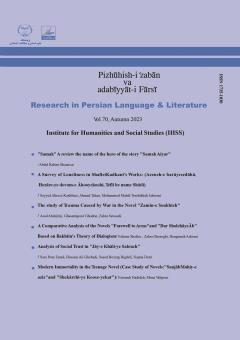In the process of creating poetry, all the elements involved are formed in the language. So, the language is one of the most basic factors in creating the poetry. Speech poetry is a new branch of Iranian modern poetry in 1370s and 1380s. While the speech poets argue tha
More
In the process of creating poetry, all the elements involved are formed in the language. So, the language is one of the most basic factors in creating the poetry. Speech poetry is a new branch of Iranian modern poetry in 1370s and 1380s. While the speech poets argue that they use all capacities of language used among the mass, reviewing the form aspects of language in this branch of Iranian poetry is very important. Introducing and explaining the forms and contents of this branch is an important step in knowing the contemporary literal evolution, while the branch has not been explored in academic literature. For this purpose, in this paper we try to define the speech poetry, its history and its linguistic aspects by focusing on the works of Reza Baraheni, Ali Babachahi, Merdad Fallah, Hafiz Musavi and Seyed Ali Salehi. The method of research is based on the style-linguistic study; the main aspects of language are reviewed in three formation: vocal, lexical and syntactic of public language. The poets of this branch use the voices of periphery, in addition to the terms, expressions, metaphor, proverbs, to enrich the language of their poems.
Manuscript profile


